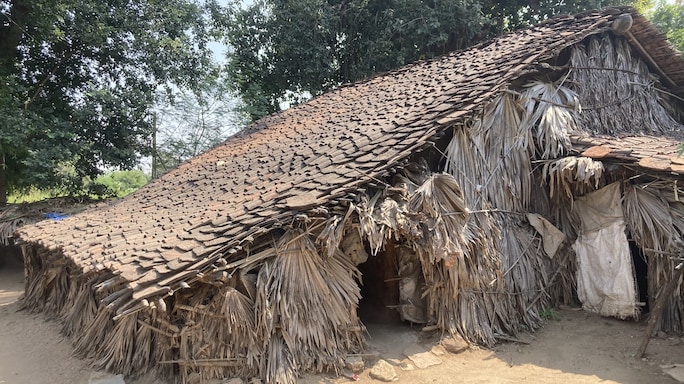The Sustainable Way of Life
Lessons from the Dhanak Adivasi community on the culture of sustainability
 Courtesy of Bhasha
Courtesy of Bhasha
Around 110 km from Vadodara in Gujarat lies the tribal-majority district of Chhota Udepur. With over 75,000 ha of forest area, the district is home to indigenous art forms like Pithora paintings, terracotta cookware, bamboo baskets, handmade Kasota stoles, beadwork and more.
While a lot of what is handcrafted here gets sold in local haats or markets; cities around Chhota Udepur get a glimpse of the wares only when local exhibitions are organized. Dive deeper into the lives of these Dhanak Adivasi communities and you realize it is a study on sustainable living and revival of indigenous art and culture.
For instance, the dying art of Kasota weaving which was traditionally used to make loincloth or langot for the Rathwa tribal males, is now being revived to make beautiful stoles. The yarn is hand-spun, dyed naturally and woven by hand. The traditional bead jewellery is also being revived based on archived designs.
 Traditional Dyeing method
Traditional Dyeing method
A glimpse into their homes also tells us a lot about how locally available material is used judiciously to avoid wastage. Taad trees (a local palm) grow in abundance here and are used extensively in daily life—when the huts need repair palm leaves are used to cover the gaps. The stalks of the trees are slit and made into fine fibre, which are tied together to make rope.
Their homes are artistically decorated as well. Intricate Pithora paintings adorn the inner walls of the homes of the community. These paintings are traditionally believed to have the power to bring them peace, prosperity and happiness. That is why these are known to be more of a ritual than an art practice. These are done to either wish for a boon or to thank the chief god of the Rathwas, Baba Pithora. In the community when there are problems such as ill-health plaguing them, they seek the guidance of the local priest or Bhadwa who based on his readings recommends the ritual. The completion of the painting is considered as fulfilment of the vow. Earlier, the motifs were inspired from mythology or depicted their daily lives. In recent times, subject to the Bhadwa’s approval, the motifs have become more contemporary with the incorporation of monster bikes and auto-rickshaws in these paintings.
 Close-up of Pithora artwork
Close-up of Pithora artwork
The Dhanak Adivasi community uses handmade terracotta cookware made of locally available material. Made with local clay, these are first sun-dried, then burnished with application of geru or red ochre paste. Lac or the resinous secretion of insects like Laccifer lacca, Carteria lacca and Tachardia lacca is then coated on these, making the utensils non-stick. Dry leaves of the Taad tree are used to fire the utensils and post a 30-minute bake session, the utensils are ready.
 Lac-coated non-stick terracotta cookware
Lac-coated non-stick terracotta cookware
Modern non-stick cookware is coated with polytetrafluoroethylene (PTFE), a synthetic fluoropolymer. There have been health concerns raised around their usage, especially on being overheated. However, clay pots like the ones used by the Adivasis are recommended even in Ayurveda because of better retention of nutrients. Also, it is believed to provide the necessary minerals like calcium, magnesium and iron. The alkaline nature of the clay is also known to neutralize the acidity in food.
Bhasha Research and Publication Centre, recognized by The Ministry of Tribal Affairs in India, as a Centre of Excellence, is part of the Bhasha Trust founded in 1996 for the study, documentation and conservation of marginal languages. The centre has been working towards increasing awareness around the life and culture of the Dhanak Adivasi community. While workshops are organized to showcase the art of dyeing and weaving, exhibitions are held to sell the locally produced wares like terracotta cookware, bead jewellery and Kasota stoles. As Dr. Madan Meena, the Honorary Director of the Adivasi Academy says, “Using locally available materials and creating everything by hand, these Adivasis have so much to teach all of us. Through our academy, we are trying to make sure that this culture of sustainable living is given a voice.”






